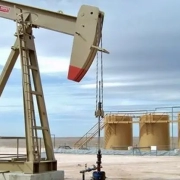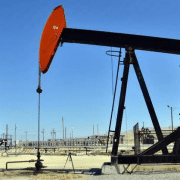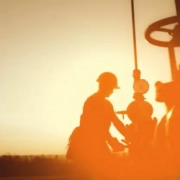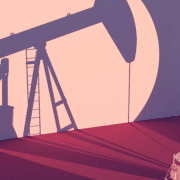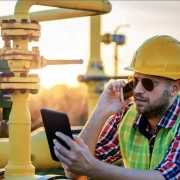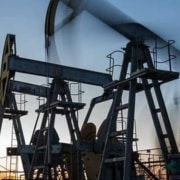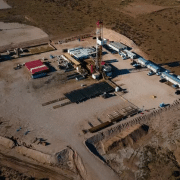⚠️ IMPORTANT LEGAL DISCLAIMER:
The information provided on this page related to Orphan Well Liability is for general informational purposes only and does not constitute legal, financial, or investment advice. Oil and gas laws, mineral rights regulations, and royalty structures vary significantly by state and jurisdiction. While we strive to provide accurate and up-to-date information, no guarantee is made to that effect, and laws may have changed since publication.
You should consult with a licensed attorney specializing in oil and gas law in your jurisdiction, a qualified financial advisor, or other appropriate professionals before making any decisions based on this material. Neither the author nor the publisher assumes any liability for actions taken in reliance upon the information contained herein.
Framing the Issue of Orphan Wells and Mineral Rights
When oil or gas wells reach the end of their productive life or become economically unviable, they must be properly decommissioned—plugged and reclaimed—to avoid environmental risks and safety hazards. Occasionally, these responsibilities fall into a legal void: wells may have no identifiable owner due to bankruptcy, dissolution, or abandonment. These are known as orphan wells, and they pose profound liabilities, especially for mineral rights owners, who may find themselves unexpectedly burdened with cleanup obligations.
Understanding how orphan well liability arises, where legal responsibility lands, and what tools exist to manage or avoid the financial danger is crucial for anyone holding mineral rights. This article unpacks these dynamics across multiple jurisdictions, offering clarity, insights, and practical guidance for mineral rights holders.
Defining Orphan Well Liability for Mineral Rights Owners
An orphan well refers to an oil or gas well that is non‑producing, has not been plugged, and for which no solvent or identifiable operator remains to handle decommissioning. Without responsible operators, states or regulatory bodies often step in—or landowners may face repercussions.
Mineral rights owners typically hold rights to subsurface resources, not surface assets like wells. Yet liability complexities can arise, especially when laws or regulatory frameworks are silent or broadly written.
When Liability Might Shift
- In Alberta, the Orphan Well Association (OWA) intervenes when a licensee becomes insolvent, transferring liability for decommissioning and reclamation. Working interest participants—those with legal or beneficial interest in the well—remain financially responsible for their share of the cost.
- In Louisiana, the landowner is not responsible unless they are also a working interest owner. The state retains liability under the law, though landowners may volunteer to restore orphan well sites through cooperative agreements—at their own cost and risk.
- In Texas, proposed legislation would allow mineral rights holders or operators in good standing to plug orphan wells without accepting full liability—an optional route aimed to accelerate cleanup and reduce state burden.
These distinctions underscore that liability for orphan wells is highly jurisdictional and depends on whether the mineral rights holder is also deemed a working interest participant under regional regulations.
The Environmental and Financial Stakes
Orphan wells are more than legal headaches—they can pose serious environmental risks and financial burdens:
- Environmental hazards include methane emissions, soil and groundwater contamination, and health threats from chemicals such as benzene or radioactive byproducts.
- In Colorado, orphan and unplugged wells contribute significantly to greenhouse gas emissions, with bonding requirements in many cases grossly underestimating real cleanup costs.
- In Alberta, the scale of the problem is staggering. Most wells are inactive or unreclaimed—Alberta has hundreds of thousands of such wells. Total industry liability has been estimated in the tens of billions of dollars.
- For mineral rights owners, unresolved liability can translate to unexpected financial exposure, work disruptions, and even legal entanglements—especially when bonds or insurance fail to cover the full cleanup cost.
Jurisdictional Frameworks and Mechanisms
The degree to which mineral rights owners might bear orphan well liabilities depends heavily on regional frameworks. Here’s a breakdown of how different areas handle it:
Alberta’s Orphan Well Association (OWA) Model
- OWA, under the Alberta Energy Regulator, manages orphan well cleanup funded by an annual industry levy.
- Ownership changes, insolvency, or non‑compliance trigger orphan designation. OWA then performs decommissioning, remediation, and reclamation.
- Working interest participants (including mineral rights holders, if recognized as such) remain liable for their proportional share of OWA costs.
Louisiana’s Oilfield Site Restoration (OSR) Program
- Funded by production fees—not taxpayer dollars—the OSR program addresses orphan well plugging and site restoration.
- Mineral rights owners are generally exempt unless explicitly defined as responsible working interest parties—but may volunteer via agreements to restore sites, assuming liability and compliance obligations themselves.
Texas Legislative Provisions
- Proposed bills aim to empower mineral estate owners or leaseholders to plug orphan wells without taking on liabilities, offering an option to speed remediation.
- Without such legislation, liability typically remains with the operator of record—or the state if no operator exists.
Challenges and Emerging Issues
Bonding Gaps and Financial Assurance Failures
- Bonding requirements often fall short of actual cleanup costs. Colorado’s experience revealed bonds covering just a small fraction of plugging expenses in some cases.
- Similar patterns occur across jurisdictions, where outdated formulas or low rates leave orphan wells underfunded.
Strategic Transfers and Bankruptcy Abuse
- Operators have reportedly transferred liability-laden wells to shell companies likely to go bankrupt, leaving cleanup obligations behind.
- In Alberta, similar “asset dumping” practices have burdened regulators and landowners with environmental and financial consequences.
Legal Precedents and the Polluter Pays Principle
- In Canada, a court ruling aligned with the polluter pays principle—holding trustees responsible for environmental cleanup obligations of bankrupt companies—reinforcing liability even when regulation lacks clarity.
Platform and Mapping Tools
- In states like Texas, tools such as well maps and real‑time production data platforms help mineral owners monitor wells and act proactively to manage risk.
Guidance for Mineral Rights Owners
Understanding the terrain is one thing—navigating it requires deliberate actions and safeguards:
Know Your Legal Status
- Determine whether you are considered a working interest participant under relevant laws—and whether that status exposes you to liability. In Alberta, mineral rights may count; in Louisiana, they may not.
Engage Early with Regulators
- If insolvency or irregular activity surfaces, engage with agencies like Alberta’s AER or Louisiana’s OSR program. These bodies can clarify liability and next steps.
Leverage Cooperative Agreements When Available
- Louisiana allows landowners to voluntarily restore orphan wells under indemnified agreements—this may avoid third-party liabilities while serving the public interest.
Use Available Tools for Oversight
- In jurisdictions with mapping platforms or developing data tools, leverage those to track wells on your land and flag risks early.
Advocate for Stronger Policy and Financial Assurances
- Push for legislation that raises bonding requirements, enforces polluter‑pays provisions, and prevents strategic debt dumping.
- Support mechanisms that allow proactive landholder involvement without assuming excessive liability—like Texas’s legislative proposal.
Monitor Bankruptcy and Liability Transfers
- Stay informed about ownership changes or bankruptcies tied to wells on your property—such shifts could trigger orphan status and unexpected liabilities.
Perspectives from the Field
Discussions in public forums reveal common sentiments and concerns:
“The Orphan Well Association doesn’t step in until the well is already orphaned… they have a lot of work to do judging by their inventory, which is growing every year.”
— A user on an Alberta discussion forum
“Operators should provide financial assurance for the full cost of plugging and abandoning a well BEFORE it runs dry… preferably before it’s ever drilled.”
— A user on a Colorado community forum
These perspectives underscore a shared frustration: regulation often lags behind environmental and financial realities, shifting burdens onto landowners and taxpayers.
Broader Outlook and Policy Evolution
The orphan well issue intersects multiple evolving fields—energy law, environmental policy, financial regulation, and community protection:
- As energy sectors evolve, governments are beginning to prioritize stronger bonding standards, clearer liability frameworks, and prevention of bankrupt liability dumping.
- Technology solutions—such as real-time well data and mapping platforms—offer mineral rights owners intel that was previously unavailable, enabling more proactive risk management.
- Landmark legal decisions reinforcing the polluter‑pays principle strengthen accountability—even when operators vanish or dissolve.
The goal is a regulatory network that protects communities, the environment, and responsible landowners, while holding profit-driven operators accountable.
Orphan well liability for mineral rights holders is a multifaceted challenge with significant environmental, legal, and financial implications. Liability hinges on jurisdictional law, regulatory models, and whether mineral rights holders qualify as working interest participants. Environmental risks, cleanup costs, and policy gaps make this a critical concern for asset holders.
By understanding local frameworks (like Alberta’s OWA, Louisiana’s OSR, or emerging Texas legislation), staying informed, advocating for better bonding, and considering proactive engagement strategies, mineral rights owners can reduce risks while supporting broader environmental protection efforts.
Do you have any questions related to Orphan Well Liability? Feel free to connect with us here.


